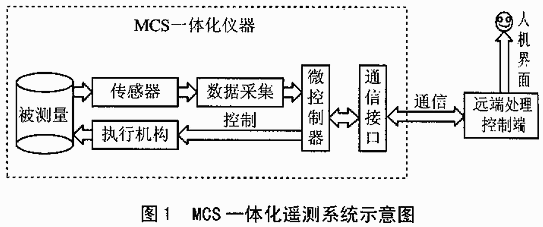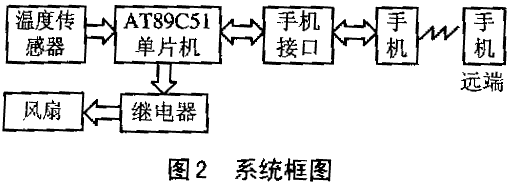Abstract: Study the application of GSM network short message service in telemetry system; discuss the structure of MC3 integrated test system; give an example of MC3 integrated telemetry system based on GSM network, and discuss the design of system hardware and software in detail.
introduction
GSM (Global System for Mobile CommunicaTIon) is short for Global Mobile Communication System. In GSM, the only service that does not need to establish an end-to-end channel is the end-to-end message service (SMS). When the mobile device is in a point-to-point communication state, it can also implement a short message service. Short messages can only convey one sentence, this communication is asynchronous. As a GSM system, each short message is processed as a separate time, and the transmission of short messages is carried out through the short message service center.
Since the point-to-point short message does not need to establish a separate communication channel, the cost is lower. Mobile and China Unicom users are charged 0.1 yuan for sending short messages internally, and mobile and China Unicom are charged 0.15 yuan. Each short message can transmit 160 7-bit encoded data or 140 8-bit encoded data, or 70 UNICODE codes. Therefore, in some measurement and control systems that do not require high real-time performance and data transmission volume and transmission speed, GSM short message interface can be used for data and control command transmission, which can save the first huge investment to establish a wireless communication network . 
1 MC3 integrated measurement and control system
MC3 integration means that one measurement and control instrument has the functions of measurement, data acquisition (collecTIon), communication (communicaTIon), and control (control) at the same time. Modern independent instruments are not only required to have the functions of measurement, data acquisition and display, but also require multiple functions of communication and control, as well as small size and low power consumption. Its structure is shown in Figure 1. MC3 integration is to change the various bus technologies in the past to decentralize the interconnection of measurement, data acquisition, communication, control and other functional modules, and make these functional modules in one instrument, or on a circuit board, or even It is integrated on the chip. This can improve system stability, reduce system space, reduce power consumption, and save power. The integration of MC3 will become a direction for the development of independent instruments, especially in the field of telemetry.
2 MC3 integrated telemetry system hardware composition
The measurement and data collection of the MC3 integrated telemetry system based on the GSM network is completed by a temperature sensor chip DS18B20. DS18B20 is a network digital temperature sensor. According to the unique advantages of the single bus, it allows users to easily build a sensor network, and makes the multi-point temperature measurement circuit simple and reliable. The networkable digital temperature sensor DS18B20 is an updated product of the DS1820. It has advantages in voltage, characteristics, and packaging, giving users more choices, allowing users to more easily build their own temperature measurement system. DS18B20 takes full advantage of the unique advantages of a single bus, can easily form a sensor network, improve the system's anti-interference, make the system design more flexible and convenient, and suitable for on-site temperature measurement in harsh environments. The communication part of the system uses a Siemens mobile phone to transmit the temperature data and receive control commands from the outside world. Basically, all mobile phones provide a user interface, and the role of these interfaces is mainly used for maintenance.
The sending and receiving of Siemens mobile phone short messages is processed by the microcontroller AT89C51, and according to the corresponding processing, the corresponding temperature value is sent to the remote mobile user. At the same time, it acts as a microcontroller to accept remote commands, identify, translate and control execution Institutional implementation. The actuator is controlled by a relay with a DC fan. The hardware block diagram of the system is shown in Figure 2. 
3 Software design of MC3 integrated telemetry system
The key and main difficulty of system development is the interface development of mobile phone short message. The development of mobile phone short messages mainly includes encoding and decoding of user data area of ​​mobile phone short messages, communication mode setting and online testing, sending and receiving of short messages, pattern matching of key command words for sending and receiving data, etc. Mobile phone interface development mainly uses the AT command set jointly proposed by Ericsson, Motorola and HP. AT commands are character-based command structures, with TEXT mode and PDU mode, as well as the BLOCK mode used earlier. The BLOCK mode is a binary stream command format with strong error detection and correction capabilities, and is mainly used in environments where the communication link is unreliable. TEXT mode is based on characters, more specifically a structure mode based on ASCII code, each command is easy to understand. The PDU mode is also character-based. To be precise, it is based on hexadecimal. The data and codes are encoded, so they cannot be directly understood. The PDU mode is most commonly used in GSM mobile devices. Siemens C35I only supports PDU mode. The GSM terminal interface of different manufacturers will be different. Its structure is AT + command = parameter. For example, to read all unread SMS messages on the mobile phone, the simplest way is to use AT + CMGL = 0; and use AT + CMGL = 4 to read all SMS messages, regardless of whether they have been read or not. Figure 3 shows the software flow chart of the system. 
Conclusion
The MC3 integrated telemetry system based on the GSM short message interface has been tested and operated, and the work is stable and reliable. The remote mobile phone can be any mobile user, but the command code can only be symmetrically fixed and open. The obtained data can be encoded in addition to data Encryption to ensure the security of the system. The system is highly scalable and can be used in unattended, household appliance condition monitoring, vehicle safety, etc .; it can also be used in many occasions, such as data collection, commercial retail, remote telemetry, global positioning, transportation It is used in regulation, car anti-theft and tracking, electronic retail, security products, mobile banking, and mobile ATM cash machines.
Product categories of E-bike Accessories, we are specialized in manufacturers from China,E-bike Accessories Supplier suppliers/factory, wholesale high-quality products of manufacturing, we have the perfect after-sales service and technical support. Look forward to your cooperation!
E-bike Accessories
Ebike Accessories,Bicycle Accessories,E Bike Accessories,Electric Bike Accessories
Changxing Deli Technology Co., Ltd. , https://www.delipowers.com